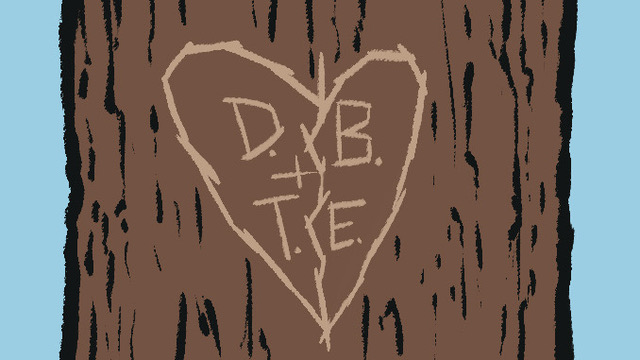
With the book closed on Syracuse’s 2020 football campaign, a few players headed to the transfer portal, searching for a new place to continue their college football careers. The most noteworthy one was tight end Aaron Hackett, who started the majority of the last two seasons for the Orange.
Hackett was a productive player, carving out a role as a trustworthy red zone target, evidenced by his nine touchdown catches at SU. The Florida native worked hard over last summer, training with NFL players in an effort to bolster his hopes at a professional career.
While Hackett did not specify a reason for his decision in his gracious departure message, there seems to be a simple one.
Despite being a solid blocker and those trusted hands, Hackett seemed to be an afterthought for the Syracuse offense in 2020, netting only ten receptions. That was less than half the catches he had in 2019, only the 2020 squad had an untested receiving corps outside of Taj Harris, which would suggest that Hackett either could or should have been a featured part of their pass attack.
The lack of use Hackett saw this past season is nothing new during Dino Babers’ tenure with the Orange. Throughout the head coach’s five seasons at Syracuse, tight ends have proven to be mostly an afterthought.
In 60 games under Babers’ leadership, Syracuse has completed 1,346 of their 2,275 attempts. Tight ends have accumulated 105 receptions on 153 targets in that time (play-by-play data on the athletic department website is not complete, but provides an accurate picture). That breaks down to 7.8 percent of all receptions on 6.7 percent of all targets.
In the 2016 season, there was not a pass-catching threat as tight end, as evidenced by Cameron MacPherson and Kendall Moore combining for six receptions for 49 yards on nine targets. Babers looked to rectify that lack of talent at the position the following season by bringing in Ravian Pierce, a junior college transfer ranked as the #3 tight end at that level.
If you want to discard the remarkably low 2016 numbers due to the lack of talent at the position, here’s what you get: 1,014 completions in 1,753 attempts with tight ends getting 99 receptions (9.8 percent of all receptions) and 144 targets (8.2 percent of all targets). Not much difference.
Pierce paid immediate dividends in 2017, just missing the top five for single-season receptions by a tight end at Syracuse with 29 receptions and four scores on 37 targets. He was a monster in SU’s 27-24 home win over Pitt that season, leading the team with nine receptions for 99 yards on a dozen targets, ten of them coming in the second half.
Big things were expected in his senior season, as Pierce appeared on some pre-season All-ACC teams. It never materialized for Pierce, though, as his stats slumped across the board. He was targeted 31 times in 2018, making a mere 16 catches for 105 yards and three scores.
Pierce was not the only tight end to be targeted that season. Hackett caught all four passes that went his way, including one for a score. Chris Elmore and Gabe Horan also were targeted once apiece and they both caught their respective passes, Horan turning his into a touchdown.
Hackett earned the starting spot in 2019 and saw a significant jump in production. He trailed only Trishton Jackson in touchdown catches with six, collecting 23 passes on 29 targets for 205 yards. Luke Benson got into the act as a big-play threat at the position, catching eight of ten passes for 176 yards and three scores, including a 70-yard touchdown. Elmore was also targeted twice, but finished with zero receptions.
With Hackett and Benson both returning, many expected the tight end position to pick up the slack for a mostly inexperienced wide receiver group in 2020. It never happened.
Only 29 passes went the way of Orange tight ends. Benson led the position with 15 targets, but only secured six of them for 63 yards and two scores with 53 yards coming on one play. Hackett caught ten of the 13 passes sent his way, matching Benson’s production of 63 yards and two touchdowns. Elmore caught his only target, gaining five yards.
In short, the Syracuse offense appeared to reduce its interest in utilizing their tight ends as soon as it appeared like the position could be one of strength. Pierce’s stat line in 2017 (37 targets, 29 receptions, 263 yards) is almost the high-water mark across the board, behind only Hackett’s 2019 touchdown production.
» Related: A lot to like about Syracuse football’s 2021 signing class
With the exception of Luke Benson, who was a sprinter on his high school track team, the tight ends have rarely gone far downfield in the passing game. In fact, Benson is the only tight end to gain more than 28 yards on a reception in these past five years. Pierce’s 9.1 yards per reception average in 2017 is the highest single-season mark for any tight end catching at least ten passes.
In the five seasons under Babers, Orange tight ends have totaled 985 receiving yards. Five different wide receivers have amassed 900 yards in a single season in that time.
When you see the whole picture of how Dino Babers’ offense utilizes his tight ends, it’s not hard to imagine a viable reason for an established player with professional football aspirations such as Hackett to seek another option. Or at least Hackett’s reason is probably better than whatever reason Babers may use to explain how his offense ignores their tight ends as a group.
For more Syracuse coverage, Like our Facebook page and follow us @TheJuiceOnline.

